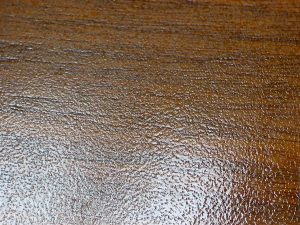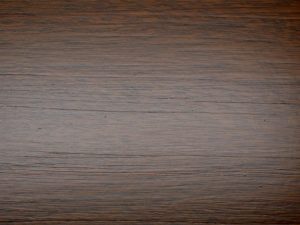We may receive a commission when you use our affiliate links. However, this does not impact our recommendations.

Severe orange peel, caused by spraying too thick a finish with too little air pressure.
We’re well into winter now, and you may have noticed that your finishes seem thicker. Thicker finishes are more likely to orange peel or leave brush marks.

Brush marks, made worse when the finish thickens in cold temperatures.
You can deal with this by adding thinner, but this will reduce the build of each coat. It’s better to be sure your finishes are warm before applying them. Here are some suggestions.
- Keep your finishes off the floor, especially off of concrete floors.
- Move the finishes into your house or office, especially during the night when you probably turn the temperature down in your shop.
- Warm the finish before using it. There are several ways of doing this, including putting the finish container into a larger bucket of hot water or wrapping it with a heating pad or dedicated bucket or drum heater like those sold by Grainger.
- You could also warm a finish in a microwave (no metal) or oven as long as the container isn’t too large.
Here are some supplies and tools we find essential in our everyday work around the shop. We may receive a commission from sales referred by our links; however, we have carefully selected these products for their usefulness and quality.










Your solution is a good one, Shaun. But may I point out that Waterlox is not oil, which is what you asked about. Waterlox is varnish thinned with mineral spirits (paint thinner). It’s what I call wiping varnish.
Bob, I’m about read to finish a medium sized box made from leopardwood in the Pacific NW. I’m thinking an oil finish. However I’m a bit worried. When I saw or plane the surface, it feels tacky to the touch. Is that some form of pitch coming out of the wood? Will it affect the finish? Should I start with a coat or two of shellac? I’m worried the oil over the shellac will not show off the incredible grain pattern of the leopardwood. Thanx for all your comments.